Today’s Current Affairs: 18th November 2025 for UPSC IAS exams, State PSC exams, SSC CGL, State SSC, RRB, Railways, Banking Exam & IBPS, etc
Table of Contents
Foraminifera:
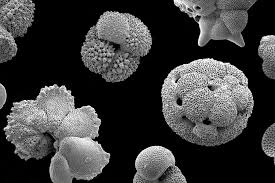
A global review of tiny sea animals called foraminifera has identified 57 new living species.
- Foraminifera, or forams for short, are single-celled organisms that live in the open ocean, along the coasts, and in estuaries.
- Most have shells for protection and either float in the water column (planktonic) or live on the sea floor (benthic).
- Of the approximately 8,000 species living today, only about 40 species are planktonic, thus the vast majority of foraminifera live on the sea floor.
- They live in a number of different habitats at the sea bottom and most ‘crawl around’ using their pseudopodia.
- They are generally less than 500 microns (½ mm) in size, though some tropical species can grow to 20 cm.
- Because they don’t have a wall around their cell membranes, they are extremely flexible and can change shape.
- Foraminifera” mean shells have hundreds of tiny holes called foramen, the Latin word for window.
- The organism pushes extensions of its cytoplasm called pseudopodia (or false feet) through these holes to gather food.
- Foraminifera eat detritus on the sea floor and anything smaller than them: diatoms, bacteria, algae, and even small animals such as tiny copepods.
- Forams are unusual among single-celled organisms because they build shells made of calcium carbonate (calcareous) or from tiny grains of sand stuck together (agglutinate).
- Despite their small size and relatively simple biology, forams build complex shells, consisting at their simplest of one chamber (like a vase or tube) to many chambers that coil in elaborate ways.
Thames River : In News
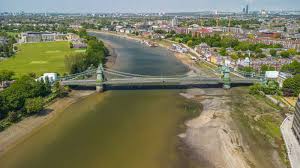
A video of an Indian man washing his feet in London’s River Thames has gone viral recently.
- It is a 346-km river that flows through southern England.
- It is the longest river in England and the second longest in the United Kingdom, right after the River Severn.
- Its source is at Thames Head, near Kemble in the Cotswold Hills, Gloucestershire County.
- It flows into the North Sea via the Thames Estuary.
- The Nore is the sandbank that marks the mouth of the Thames Estuary and the confluence point of the Thames and the North Sea.
- The Thames’ basin covers an area of approximately 16,130 sq.km.
- The Thames is tidal a few miles upstream from London. Past London it becomes an estuary.
- Main Tributaries: Lea, Leach, Churn, Coln, Windrush, Kennet, Evenlode, Ock, and Loddon.
- The River Kennet is the largest one at 45 miles long.
- The river passes numerous popular cities along its way, such as London, Reading, Hendley-on-Thomas, Windsor, and Oxford, where it is also called the Isis River.
- It provides two-thirds of London’s drinking water.
- It has been a vital transportation route since ancient times, facilitating trade and commerce between London and other parts of England.
- There are 16 bridges that cross the River Thames in Greater London alone, most prominently the Golden Jubilee Bridges and the Millennium Bridges for pedestrians.
Siliguri Corridor:
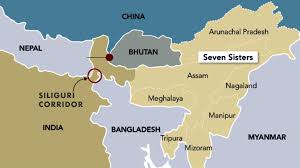
Amid shifting regional dynamics following the change of regime in Bangladesh and concerns over China’s growing presence near the vulnerable Siliguri corridor, the Indian Army has reinforced its eastern frontier by establishing three new garrison locations.
- It is a narrow stretch of land in West Bengal that connects India’s mainland to its northeastern states.
- It is around 170 km long and 60 km in width, with its narrowest section being just 20-22 km.
- Overall, it is 12,200 sq.km. in area.
- This corridor shares its border with Nepal, Bhutan, and Bangladesh and is only 130 km away from China’s Chumbi Valley.
- Its geographical fragility and criticality have earned it the nickname “Chicken’s Neck” in strategic and military circles.
- It is the only land link between our Northeast region and the rest of the country.
- Any disruption in this corridor — be it from military conflict, natural disaster, or internal unrest — would sever India’s northeastern states from the rest of the country.
Portugal : In News
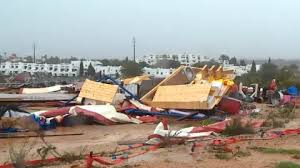
Violent weather from Storm Claudia killed three people and injured dozens in Portugal.
- It is the westernmost country of mainland Europe, located on the Iberian Peninsula.
- It shares land border with Spain (north and east).
- It is bounded by the North Atlantic Ocean to the south and west.
- It also administers two autonomous regions: the Madeira and Azores archipelagos, located in the Atlantic Ocean.
- Capital city: Lisbon
- Its climate is very much like that of most Mediterranean countries. This means it’s hot in the summer and temperate in the winter.
- The Tagus River, flowing west into the Atlantic ocean, divides Portugal into mountainous northern regions and rolling plains in the south.
- Highest Point: Ponta do Pico (Pico Alto), located in the Azores.
- It mainly consists of iron ore, copper, zinc, tin, tungsten, silver, gold, uranium, marble, clay, gypsum.
Senkaku Islands:

A China Coast Guard ship formation passed through the disputed waters of the Senkaku Islands.
- These are an uninhabited group of islands situated in the East China Sea.
- The islands comprise Uotsuri Island, Kuba Island, Taisho Island Kitakojima Island, Minamikojima Island, Tobise Island, Okinokitaiwa Island, and Okinominamiiwa Island.
- The total land area of all the islands is roughly 6.3 square kilometers.
- This island consist of conglomerate sandstone (alternate layers of sandstone and conglomerate in some parts), tuff, andesite, andesitic lava.
- Also it consists of coral outcroppings elevated above sea level during the Holocene era, and other rocky material.
- The surrounding area is highly volcanic and features faults associated with this volcanic activity, and this affects land formation.
- The Senkaku Islands (called the Diaoyu Islands by China) have long been disputed between China and Japan.
- Currently, Japan administers and controls the Senkaku Islands as part of the city of Ishigaki in Okinawa Prefecture.
e-Jagriti Platform: Data
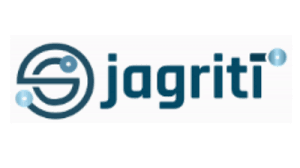
The e-Jagriti Platform has emerged as a transformative digital grievance redressal system, registering over two lakh users since its launch on January 1, 2025.
- The e-Jagriti is a flagship initiative by the Department of Consumer Affairs, Ministry of Consumer Affairs, Food & Public Distribution.
- It is aimed at strengthening the consumer dispute redressal system across the country.
- It has features like multilingual interfaces and accessibility tools that make it user-friendly for diverse demographics.
- It integrates legacy systems like Online Case Monitoring System (OCMS), E-Daakhil, NCDRC Case Monitoring System, CONFONET OCMS, e-Daakhil, NCDRC CMS and CONFONET into a single, seamless interface.
- It has case filing, online fee payment, case monitoring modules for seamless disposal of cases by all the Commissions, has Smart search facility on archived consumer complaints / cases / judgements using AI technology for metadata and keyword creation.
- NRIs and citizens can file and manage cases from any location, with secure end-to-end encryption and role-based permissions.
- It enables consumers to file complaints, track case statuses, and access judgments online.
- The platform plays a vital role in digitizing consumer commissions and empowering citizens by providing easy access to legal remedies.
- It provides simple, fast and a more cost-effective consumer disputes redressal software solution at all levels.
WHO Global Tuberculosis (TB) Report 2025:
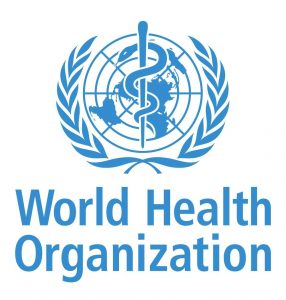
The World Health Organisation (WHO) Global Tuberculosis (TB) Report 2025 shows a sharp 21% fall in India’s TB incidence, dropping from 237 per lakh in 2015 to 187 per lakh in 2024 nearly twice the pace of the global decline and marking a major milestone in India’s fight against the disease.
Key Findings of the WHO Global TB Report 2025:
- In 2024, 10.7 million people fell ill with TB and 1.23 million died. The incidence rate was 131 per 100,000 and the case fatality rate was 11.5%.
- TB is among the top 10 causes of death globally and the leading killer from a single infectious agent.
- 30 high-burden countries account for 87% of global TB. The top contributors are India (25%), Indonesia (10%), Philippines (6.8%), China (6.5%), Pakistan (6.3%), Nigeria (4.8%), DR Congo (3.9%), Bangladesh (3.6%).
- Undernutrition, low income, Human Immunodeficiency Virus (HIV), diabetes, smoking, and alcohol-use disorders.
- India accounts for 25% of global TB cases but has shown one of the fastest declines among high-burden countries. Treatment coverage improved from 53% (2015) to 92% (2024).
- India’s TB mortality rate fell from 28 per lakh in 2015 to 21 per lakh in 2024.
- However, despite this progress, India still accounted for about 28% of all TB deaths worldwide in 2024.
- Treatment success rate under Pradhan Mantri TB Mukt Bharat Abhiyan is at 90% (2024), above the global average of 88%.
- India reports one lakh cases remained “missing,” meaning undiagnosed cases that continue to spread the infection.
- India still contributes 8.8% of the global detection gap, second only to Indonesia (10%).
India’s Carbon Emission Growth Slows in 2025:
India’s carbon dioxide emissions from fossil fuels are projected to rise by only 1.4% in 2025, a sharp slowdown from the 4% increase recorded in 2024, according to the Global Carbon Project (GCP) 2025 study. GCP, is an international collaborative program established in 2001 to study and integrate knowledge of the global carbon cycle and human activities affecting it.Emissions are expected to increase from 3.19 billion tonnes in 2024 to 3.22 billion tonnes in 2025.Global CO₂ emissions from fossil fuels are expected to rise 1.1%, reaching a record 38.1 billion tonnes this year.The study warns that the carbon budget (the maximum CO₂ we can emit while still keeping warming below 1.5°C) is almost exhausted, with only 170 billion tonnes of CO₂ remaining (about four years of emissions at 2025 levels).
Wholesale Price Index Slips Into Deflation:
India’s Wholesale Price Index (Base Year: 2011–12) fell to a 27-month low in October 2025, slipping into deflation at –1.21%, compared to –0.13% in September. The drop was driven by lower prices of food items and crude petroleum, softer fuel and manufactured goods prices, and the impact of 2025 Goods and Services Tax (GST) reforms.Deflation is the opposite of Inflation. It refers to a sustained and general decrease in the overall price levels of goods and services in the economy.
Mahe: Indigenous Anti-submarine Warfare Vessel
India is set to commission Mahe at the Naval Dockyard, Mumbai, marking a significant step forward in indigenous naval shipbuilding and maritime defence preparedness.Mahe, the first vessel of the Mahe-class Anti-Submarine Warfare Shallow Water Craft (ASW-SWC), built by Cochin Shipyard Limited (CSL), Kochi, under India’s Aatmanirbhar Bharat initiative.It features over 80% indigenous components, showcasing India’s growing naval manufacturing capability.Designed for high-speed littoral operations, including submarine hunting and coastal patrol.Combines stealth, mobility and precision, ideal for securing India’s near-shore maritime zones.Named after the historic coastal town of Mahe on the Malabar Coast in the Union Territory of Puducherry, the ship’s crest features an Urumi, the flexible sword used in Kalaripayattu, symbolising agility, precision and lethal grace.It marks the arrival of a new generation of Indian shallow-water combatants, boosting coastal defence capabilities.
Precision Biotherapeutics:
The rise of next-generation precision biotherapeutics driven by breakthroughs in genomics, CRISPR, and personalised medicine has positioned India to transform treatment for genetic, metabolic, and cancer disorders.Precision biotherapeutics are medical interventions—drugs, biologics, or gene-based therapies—designed specifically around an individual’s genetic, molecular, or cellular profile instead of a one-size-fits-all approach.
Key Features:
- Tailor-made therapies based on genomics, proteomics, and molecular diagnostics.
- Uses tools like CRISPR gene editing, mRNA therapeutics, monoclonal antibodies, and CAR-T therapy.
- Focus on cause correction rather than symptomatic relief.
- AI and big-data analytics enable high-precision drug design and response prediction.
Operation Midas:
Ukraine has launched Operation Midas, a major anti-corruption probe exposing a large-scale bribery and money-laundering scheme involving Energoatom officials and influential businessmen.A 15-month undercover anti-corruption investigation led by NABU (National Anti-Corruption Bureau) and SAPO (Specialised Anti-Corruption Prosecutor’s Office) into graft inside Ukraine’s state nuclear company Energoatom. Named after King Midas, symbolising how officials illegally “turned contracts into gold.”
10 years of AMRIT Pharmacy:
AMRIT Pharmacy marked its 10th anniversary, with Union Health Minister announcing nationwide expansion and unveiling new digital upgrades.AMRIT (Affordable Medicines and Reliable Implants for Treatment) Pharmacy is a government initiative providing life-saving medicines, implants, and medical consumables at 50–90% discounted rates.Launched in 2015, under the Ministry of Health & Family Welfare to expand affordable access to critical medicines across India. Implemented nationwide by HLL Lifecare Limited, a Central Public Sector Enterprise under MoHFW.Aim is To ensure that quality branded and branded-generic medicines, surgical implants, and critical care products are accessible and affordable, especially for low-income and high-burden patients.
Adam Chini Rice Variety:
BHU researchers have successfully revived and improved the traditional aromatic black rice variety Adam Chini using mutagenesis, making it shorter, faster-maturing, and higher-yielding without losing its signature aroma. Adam Chini (also called Adamchini Chawal) is a traditional, short-grained, aromatic black rice variety from Eastern Uttar Pradesh, known for its sugar crystal–like grains, strong fragrance, and superior cooking quality. Primarily cultivated in Chandauli, Varanasi, Mirzapur, and Sonbhadra districts—forming part of the Vindhya foothill agro-ecosystem.Received Geographical Indication (GI) status on 22 February 2023 (valid till November 2030)
Tata Memorial Breakthrough for Bladder Cancer:
Indian researchers from Tata Memorial Centre (TMC) have demonstrated that radiation therapy after bladder cancer surgery can drastically reduce the chances of cancer returning in the pelvic region. This marks the first high-level global evidence from an India-led trial and could revolutionize how high-risk bladder cancer patients are treated post-surgery.Conducted between 2016 and 2024, the Bladder Adjuvant Radiotherapy (BART) trial is the largest randomized trial in the world to study the effect of radiation after radical cystectomy (surgical removal of the bladder). Over 150 patients from multiple Indian cancer centres participated.
Raulane Festival:
Valleys of Kinnaur, Himachal Pradesh, where each mountain peak seems to echo ancient tales, the locals honour a magical winter tradition known as the Raulane Festival. Rooted in folklore, spirituality, and communal bonding, this festival is a symbolic farewell to the Sauni fairies—mystical beings believed to protect villagers during the harsh winter season. Celebrated with masked dances, ritual performances, and deep reverence at the Nagin Narayan temple, the Raulane Festival remains one of Himachal’s oldest surviving winter traditions, kept alive through oral history and vibrant community participation.
Supreme Court Orders Jharkhand to Declare Saranda Forest a Wildlife Sanctuary:
The Supreme Court of India has directed the Jharkhand government to declare the Saranda Forest as a wildlife sanctuary. This ruling highlights the urgent need to protect the forest’s rare biodiversity, ecological value, and tribal heritage, amidst increasing developmental pressures.The Saranda Forest, located in the West Singhbhum district of Jharkhand, spans an area of approximately 820 to 900 square kilometers. It is known as Asia’s largest natural Sal (Shorea robusta) forest and is popularly referred to as the “land of seven hundred hills” due to its undulating, hilly terrain.
RBI’s 10 % Tier‑I Cap on Acquisition Financing: Banks Seek More Flexibility:
The Reserve Bank of India (RBI) has stirred the financial sector with a draft proposal allowing banks to finance corporate acquisitions—domestically and internationally. While this marks a significant policy shift aimed at enabling Indian companies to scale strategically, the framework has triggered debates. With a cap on acquisition financing exposure set at 10% of a bank’s Tier-I capital, and a 30% equity contribution mandate from the acquiring firm, many bankers believe the proposed limits may hinder the very intent of driving bold mergers and acquisitions.Banks may fund up to 70% of the acquisition deal, provided the acquiring company contributes 30% in equity. The acquiring firm must be listed and profitable for three years, with a satisfactory net worth. Bank exposure for acquisition financing is capped at 10% of Tier-I capital, maintaining conservative lending norms. Overall capital market exposure is also limited: 20% for direct, and 40% for combined (direct + indirect) exposures.
42 Indians Dead In Bus–Tanker Collision Near Medina:
Road accident near Medina in Saudi Arabia has claimed the lives of at least 42 Indian nationals, most of whom were Umrah pilgrims from Hyderabad. The bus, traveling from Mecca to Medina, collided with a diesel tanker around 1:30 am IST near Mufrihat, causing a massive fire that left the vehicle completely charred. With identification challenges, emergency responses underway, and government coordination intensifying, the incident has triggered widespread grief and urgent action from authorities in India and Saudi Arabia.
Sheikh Hasina Sentenced to Death:
The political landscape of Bangladesh has been shaken by a historic verdict delivered by the International Crimes Tribunal (ICT). Former Prime Minister Sheikh Hasina, ousted after a massive student uprising that led to the fall of her government, has been sentenced to death for crimes against humanity. The trial, conducted in Hasina’s absence, has drawn criticism and allegations of political vendetta. Sheikh Hasina, a dominant figure in Bangladesh’s politics for decades, found herself at the center of controversy following the student-led mass protests that unfolded last year. These protests escalated into a nationwide uprising, ultimately leading to the collapse of her administration. Hasina served as Prime Minister for multiple terms. Student protests escalated into a national movement.Her government was toppled following civil unrest.
RBI Approves Appointment of S Krishnan as Chairman of J&K Bank:
S Krishnan, a seasoned banking professional, has been appointed as the part-time chairman of Jammu and Kashmir Bank (J&K Bank). The Reserve Bank of India (RBI) has approved his appointment, which officially came into effect on November 13, 2025, and will continue till March 26, 2028.This move is expected to bring robust leadership and strategic guidance to the Srinagar-headquartered bank, especially in its efforts to strengthen governance and expand operations.




